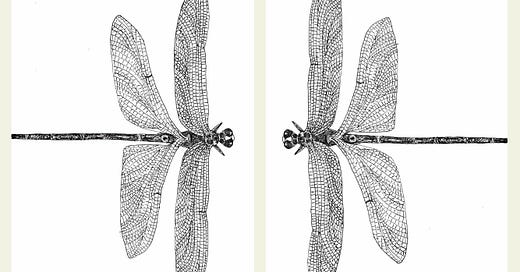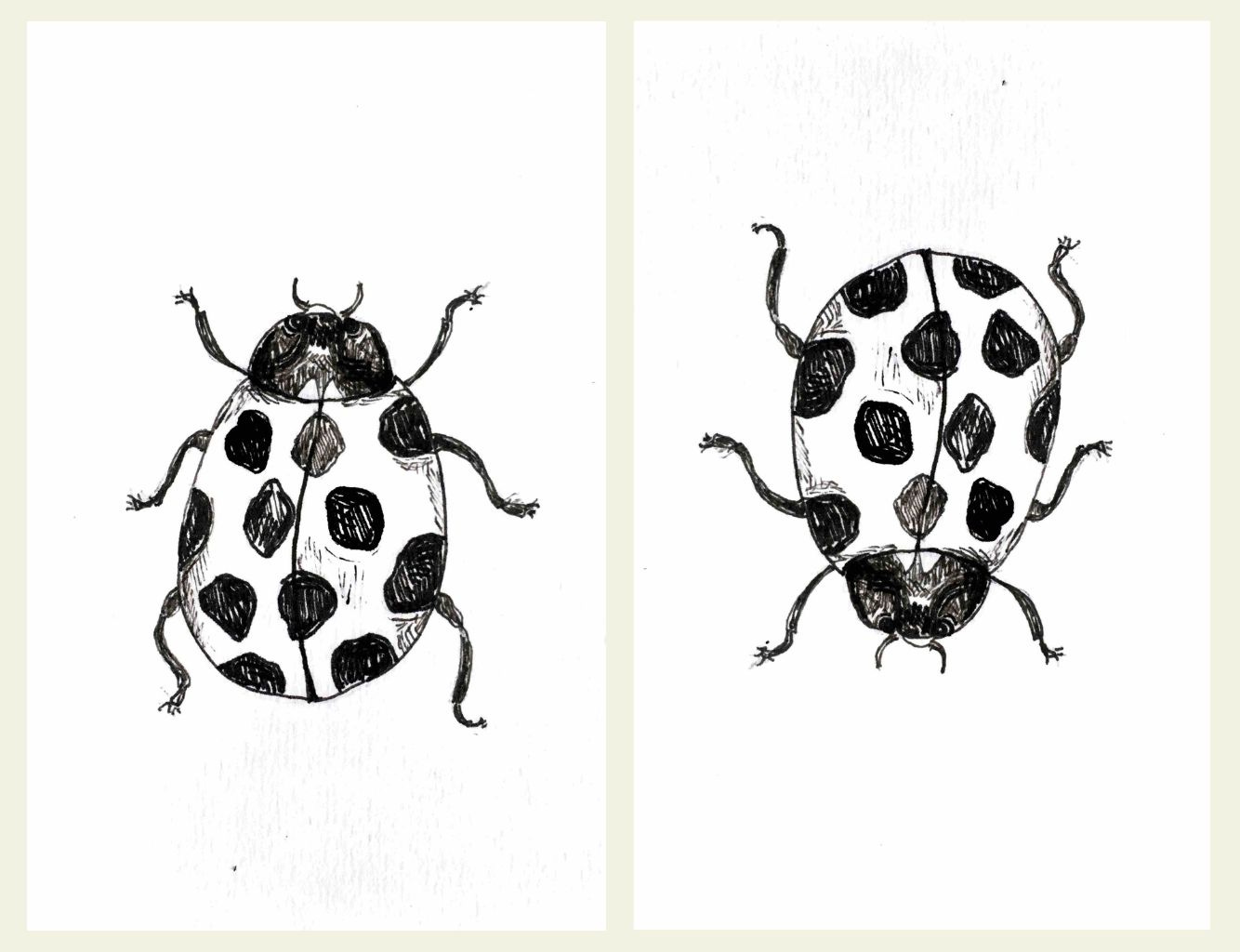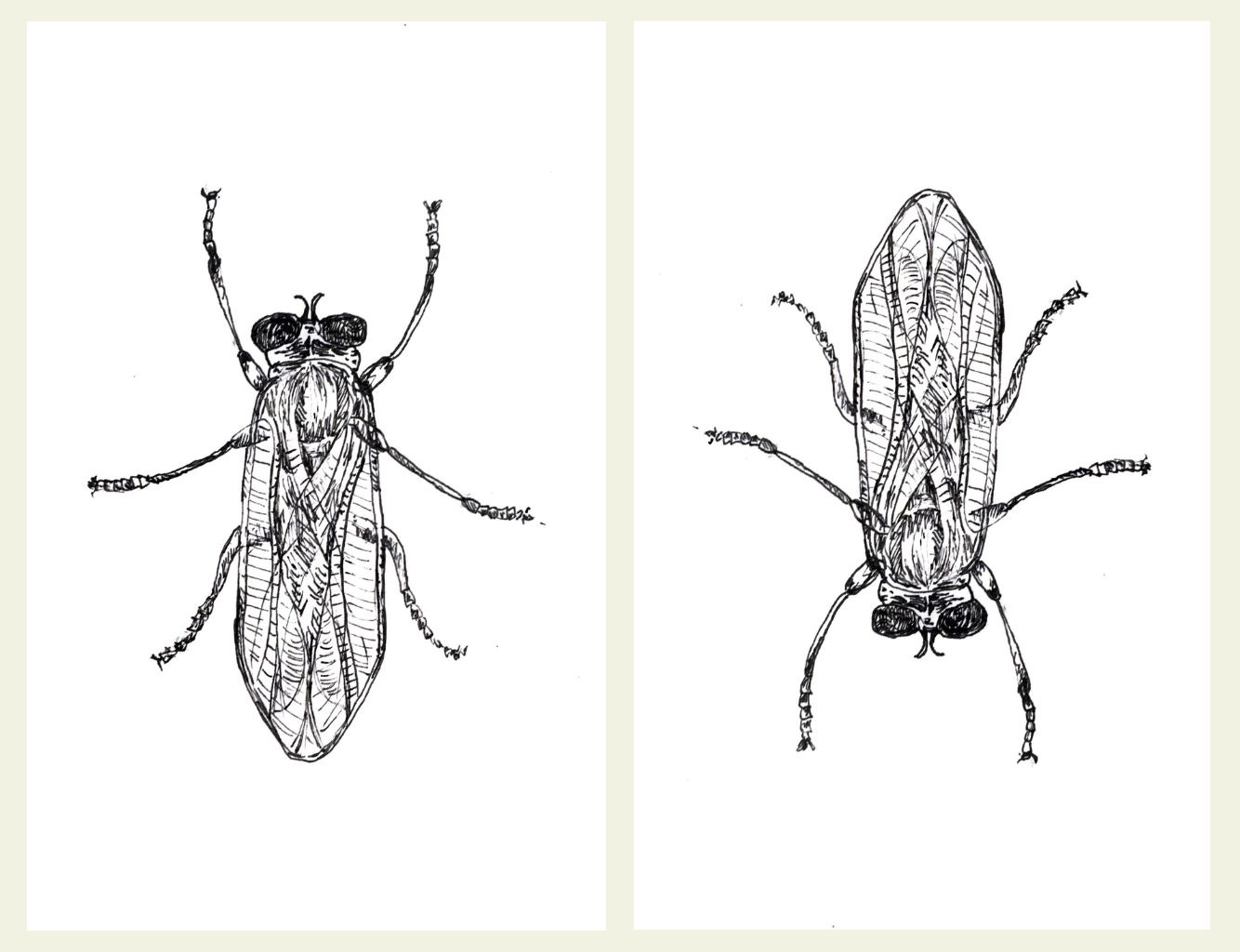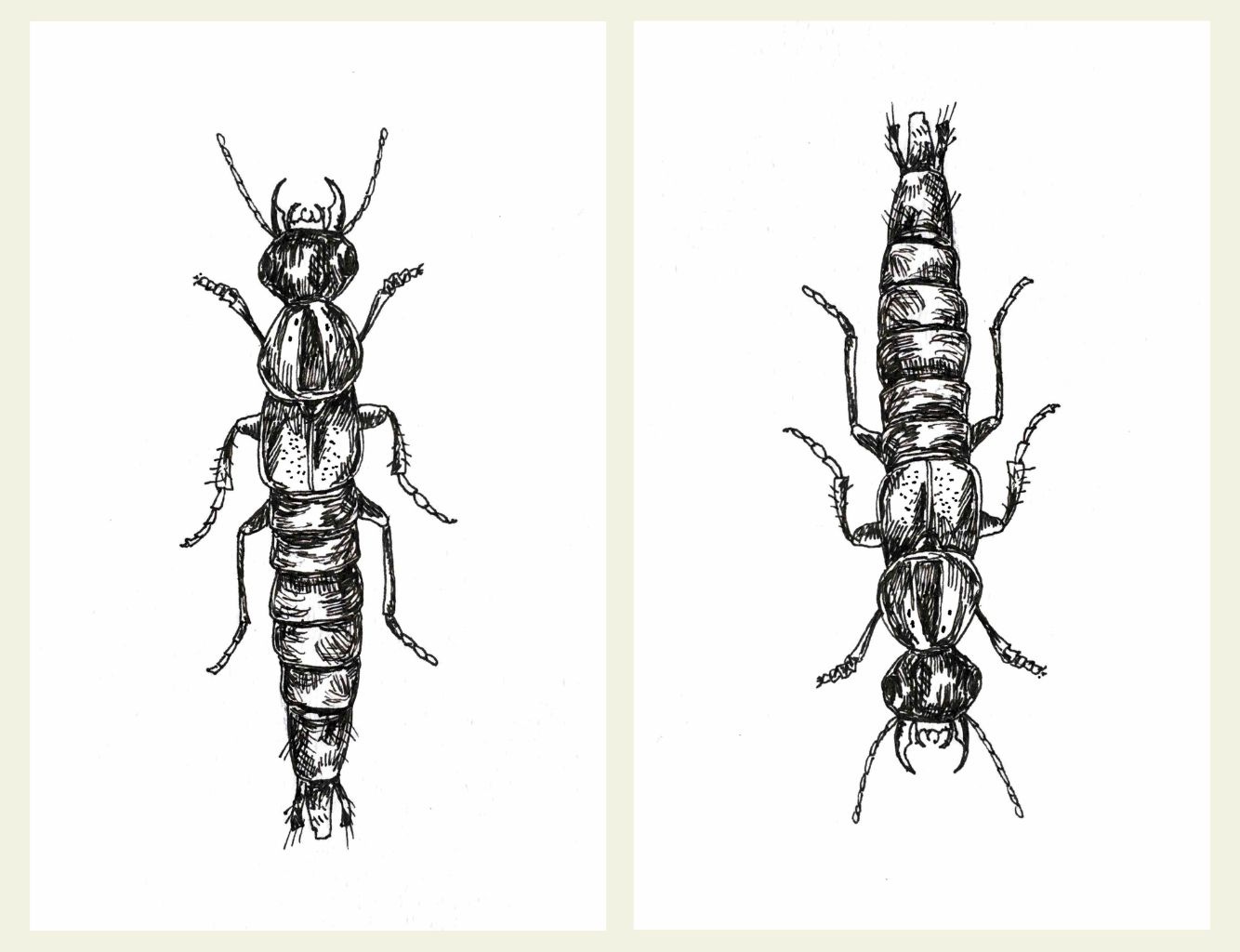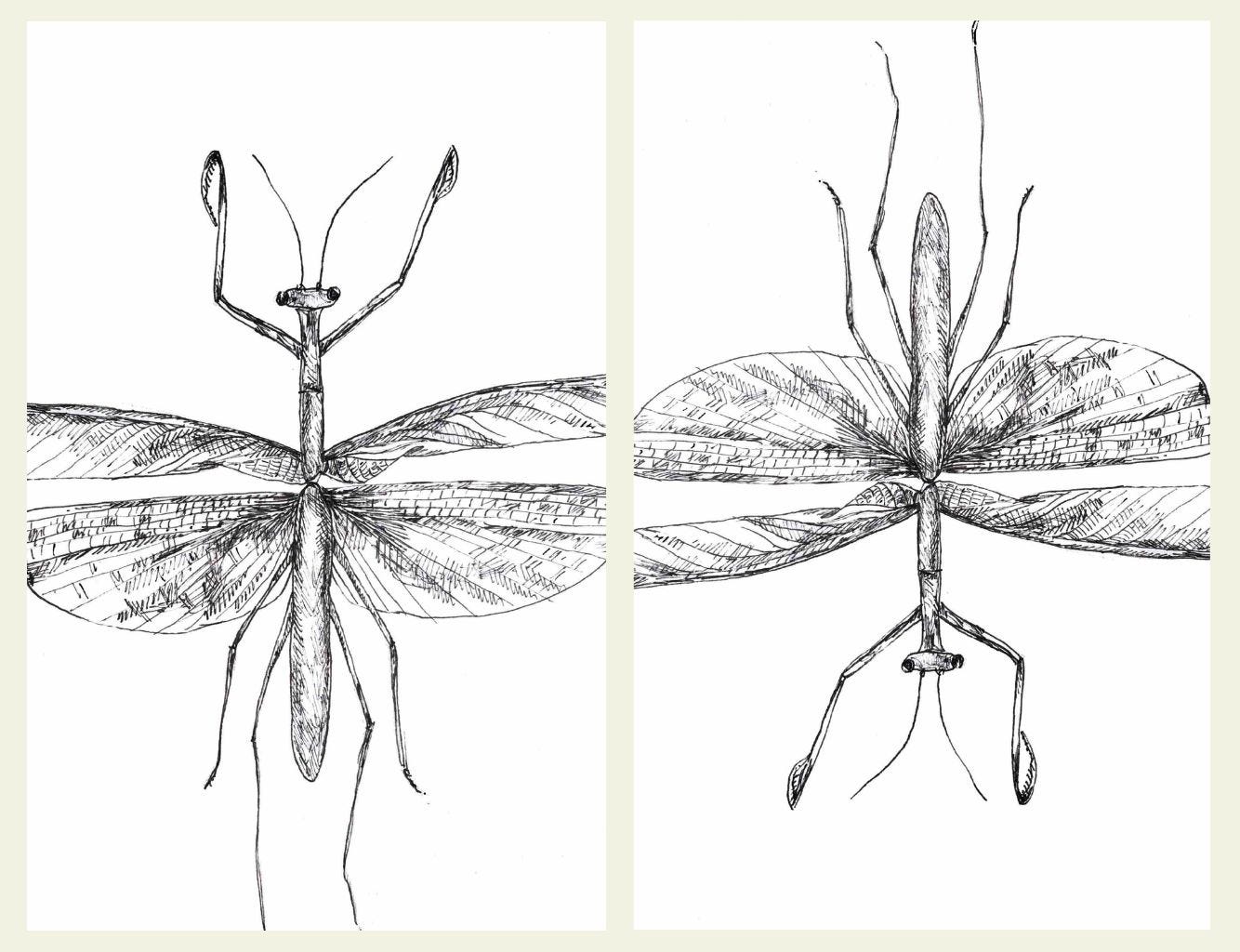Beneficial insects and how to make them feel welcome in your garden
A little celebration of insects like bees, ladybirds and hoverflies who can help your garden thrive.
Insects are so much smaller than us that it’s easy to overlook them or swat them away with the back of a hand. But when you get down to eye level with them, they’re really quite funky and cool, often with strange textures and vibrant patterns. I like the quick scurry of beetles and the elegant flitting of dragonflies.
We now know that insects are irreplaceable. They’re essential to our own survival and we’d be right to pay more attention to them and hold them in higher regard.
Responsible for most of the pollination that happens across the world, insects ensure we have access to seeds, fruits and vegetables. Many are also crucial composters. Insects provide food for birds and lizards, and many insects are predators themselves, keeping populations of caterpillars, grasshoppers and spiders in check. Some insects play an essential role in cleaning aquatic ecosystems and others keep invasive plants from running rampant.
We also know that insect populations are in decline across the world due to the mingling of many factors such as loss of habitat, pollution, the spread of pathogens and climate change.
I feel like we can play a role in planting pockets of hope for insects. It starts with noticing, and learning to identify. Then we can put small slow solutions in place to coax more beneficial insects into our gardens and make them feel welcomed. I’ve been learning about insects that can actually help our gardens thrive, and thought I’d share some findings.
Types of beneficial insects
There are many, many types of insects that live in our gardens and while some of them can cause problems for us, others provide crucial functions. We can loosely break the category of beneficial insects up into three subcategories: pollinators, predators and parasites. Some insects fit in more than one subcategory, of course.
Pollinators are pretty well celebrated for their work in spreading pollen, but predators and parasites also play an important role in keeping the ecosystem in balance. When they’re in your garden, they’ll help control populations of insects that may damage plants such as aphids and caterpillars.
Here are a few insects to keep your eye out for, and below are some ideas to encourage more of them into your garden.
Bees
Bees are probably the most celebrated insect by gardeners, and for good reason. There are more than 2000 native been in Australia, and many more introduced species. Honey bees are the most well known, but not all bees are in the business of making honey. Whether they make honey or not, bees will pollinate flowers by moving from one flower to the next as they collect nectar and pollen.
A native species called the blue banded bee is worth a special mention for its blue striped abdomen and its specialised ‘buzz pollination’ technique. Once it has entered a flower, the bee will vibrate its flight muscles, causing the pollen to shoot out of its capsules. Only a few bees have this ability.
Ladybirds
We’ve named ladybirds sweetly, but in the insect world most ladybirds are predators. Right from the moment they hatch, ladybird larvae will seek out aphids, mites and scale insects to feast on. There are about 300 species of ladybird in Australia, so of course there are exceptions. A very small number of ladybirds actually eat leaves, but for the most part you want to encourage ladybird populations in your garden.
Females will typically lay their eggs near a source of food, for example next to a scaly clump of aphids. The eggs are spindle-shaped (I recommend googling) and usually cream, orange or yellow in colour. The larvae are usually darkly coloured and elongated with spiky bits (again, I recommend googling so you can spot them).
The common spotted ladybird typifies the classic ladybird look, but ladybirds vary in colour and pattern. The striped ladybird, for example, defies the spots altogether and wears distinct black stripes on its back.
Hoverflies
Hoverflies have a distinct yellow and black striped abdomen and are often mistaken for bees or wasps. Like bees, adult hoverflies are excellent pollinators and welcome garden residents. They’re around most of the year, but more active in warmer weather.
Hoverfly larvae are eyeless predators with a taste for aphids, sometimes chowing down on 30 aphids per day. Like ladybirds, a female hoverfly will lay her eggs near an aphid colony so that her offspring can start eating as soon as they hatch. The larvae look plump and green, with a spiny coat.
Lacewings
Lacewings are pretty insects with delicate wings and long antennae. The adults will mostly consume nectar and pollen from flowers, but the larvae have a killer instinct and will help keep aphids and other garden pests in check.
Green lacewing larvae are sometimes called ‘insect crocodiles’ because of the large jaws that jut out from their head. Apparently they’ll sometimes sneak up on prey by carrying half-eaten meals on their back as a disguise.
Native earwigs
The introduced European earwig can leave large holes in leaves, petals and fruit, but most native species are not considered garden pests. The native common brown earwig, for example, is a beneficial predator in the garden, eating soft-bodied prey like caterpillars and slugs. They also feast on moth pupae.
All earwigs have large pincers at the end of the abdomen, but you can identify the common brown earwig by the distinctive orange triangle on its back. The European earwig is a dark reddish brown all over.
Parasitic wasps
Some types of wasps will lay their eggs inside other insects. When the eggs hatch, the larvae will eat their host from the inside out. There are many different species of parasitic wasps in Australia. Some target caterpillars, others target aphids or beetles. In general, parasitic wasps will help control populations of not-so-helpful bugs in your garden.
Dragonflies and damselflies
Ancient insects, and a personal favourite of mine, dragonflies and damselflies are elegant and magical to spot. They’re water lovers, and will make their home in gardens with ponds or other wetland habitats. Some species will lay their eggs directly in the water while others will go for plant tissue or mud surrounding the water.
The larvae of dragonflies and damselflies are predators, devouring the larvae of mosquitoes and midges. The adults will capture their prey mid flight, and can actually hunt together like a school of sharks in the air.
Robber flies
Robber flies tend to hang out high up on a sunlit perch from where they can survey the scene before swooping in and catching their prey. They eat a wide range of insects, most helpfully moths, flies and grasshoppers, but they’ll often eat wasps, bees and beetles too.
There are something like 600 species of robber flies in Australia, so naturally there’s some variation between species. Generally they’ll have large eyes, a long, slender abdomen and a single pair of wings. Many species are black or grey, but some like the giant robber fly have bright yellow markings.
Rove beetles
Rove beetles are predators often found at soil level under mulch or in the compost bin. They like a moist environment and many species avoid sunlight, preferring to hunt their prey at night. Most species of rove beetles are dark and sleek, but some have bright markings.
Rove beetles’ preferred prey varies between species. They have been known to go for aphids, fungus gnats, mites, slugs, snails, nematodes and moth eggs. They move quickly along the ground in a slithering manner and most are also confident flyers. When they’re threatened, rove beetles will raise their abdomen like a scorpion.
Mantids
Mantids are commonly known as praying mantises because of how they hold their forelegs together while waiting for prey. They’re predatory insects, and often hunt alone, sometimes swaying side to side to mimic a leaf in the breeze. They’ll eat a wide range of other insects, and can help keep less desirable insect populations in check such as caterpillars, aphids and mosquitoes.
Praying mantids can be green, brown, straw or pink. Some species can grow up to 12 cm, but others can be the length of a fingernail. They can sometimes be confused with stick insects. To identify them, just look out for the classic praying stance and little spikes on the forelegs.
How to encourage beneficial insects into the garden
Avoid using any pesticides in your garden. While they might kill off unwanted bugs, they’ll also damage the populations of beneficial insects. Plus, when you obliterate a population of aphids, for example, you’ll no longer have a food source to encourage ladybirds and hoverflies into the garden.
Grow pollen-rich flowers. Many beneficial insects like flowers with easy-to-access pollen. A safe bet is plants in the parsley family (Apiaceae) and the daisy family (Asteraceae). Aim for a range of plants that will flower at different times of the year so that there’s always a source of pollen available.
Grow native plants that flower at different times of the year. Native bee species particularly like eucalyptus, bottlebrush, wattles and native daisies.
Let some of your herbs and vegetables go to flower. Many flowers from your veggie garden such as dill, fennel, coriander and parsley are favourites with beneficial insects.
Provide shelter and habitat. Plant a variety of plants to provide shelter, or consider making a plant hotel out of old wood.
Let me know if you spot any insects in your garden or around your neighbourhood. I’ve got my eyes peeled.
Ciao,
Melody
All illustrations by me, 2023.
References:
Georgia Angus (2023). 100 Australian Butterflies, Bees, Beetles & Bugs. Hardie Grant Explore.
Denis Crawford (2015). Garden Pests, Diseases & Good Bugs. Harper Collins.
Department of Primary Industries and Regional Development (2014). Beneficial garden organisms. Agriculture and Food.
Hugh Brier, Joe Wessels & Kate Charleston (2012). Good Bug, Bad Bug?DEEDI (Primary Industries).

